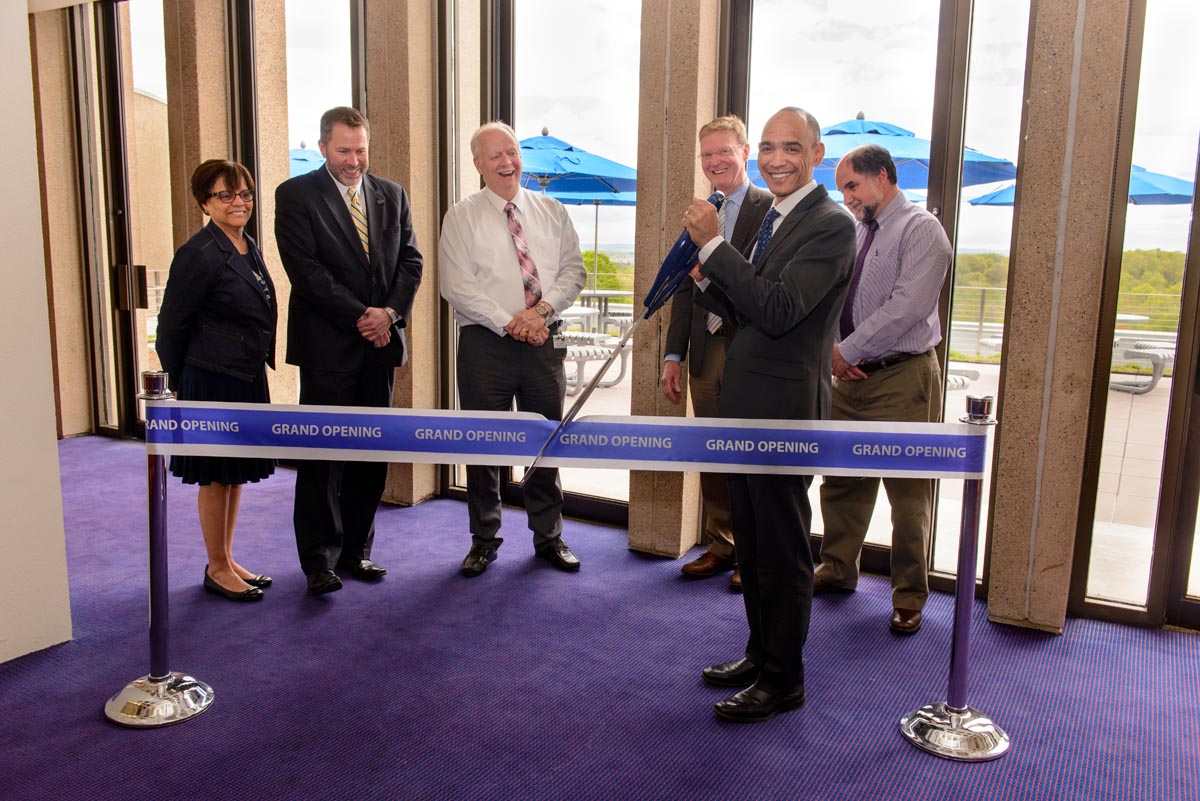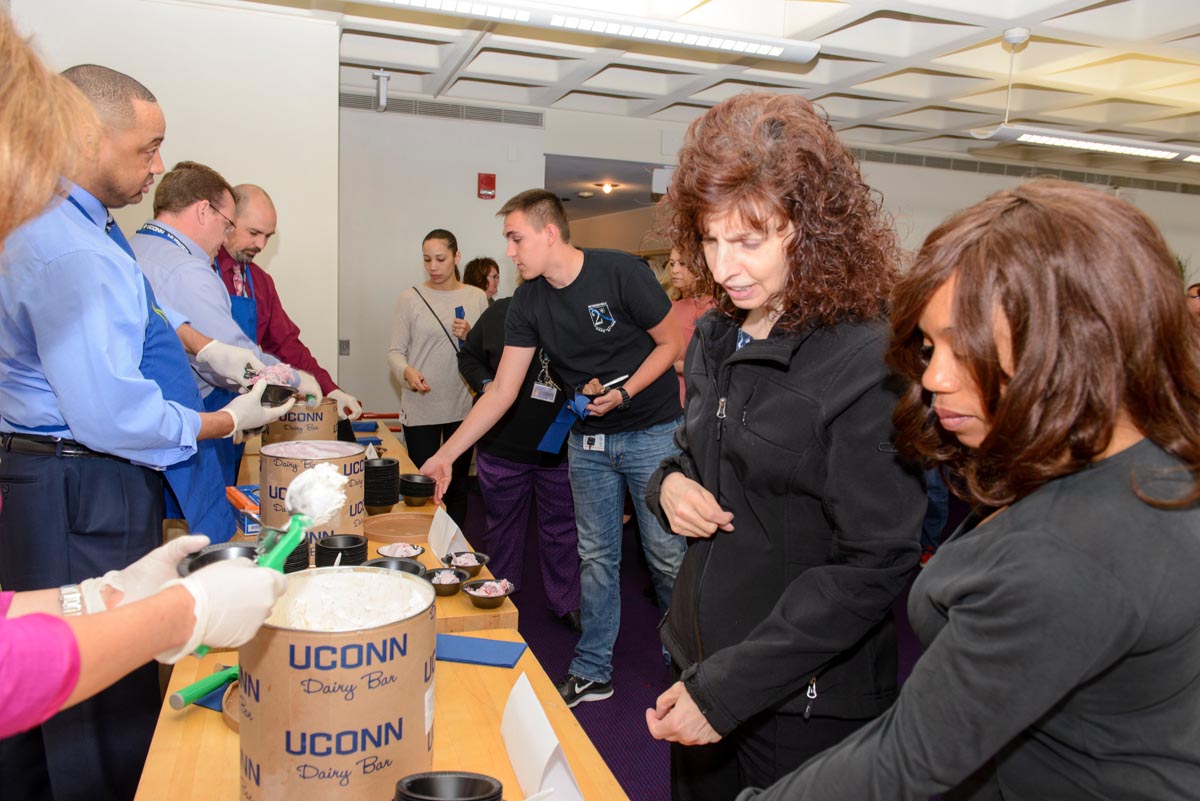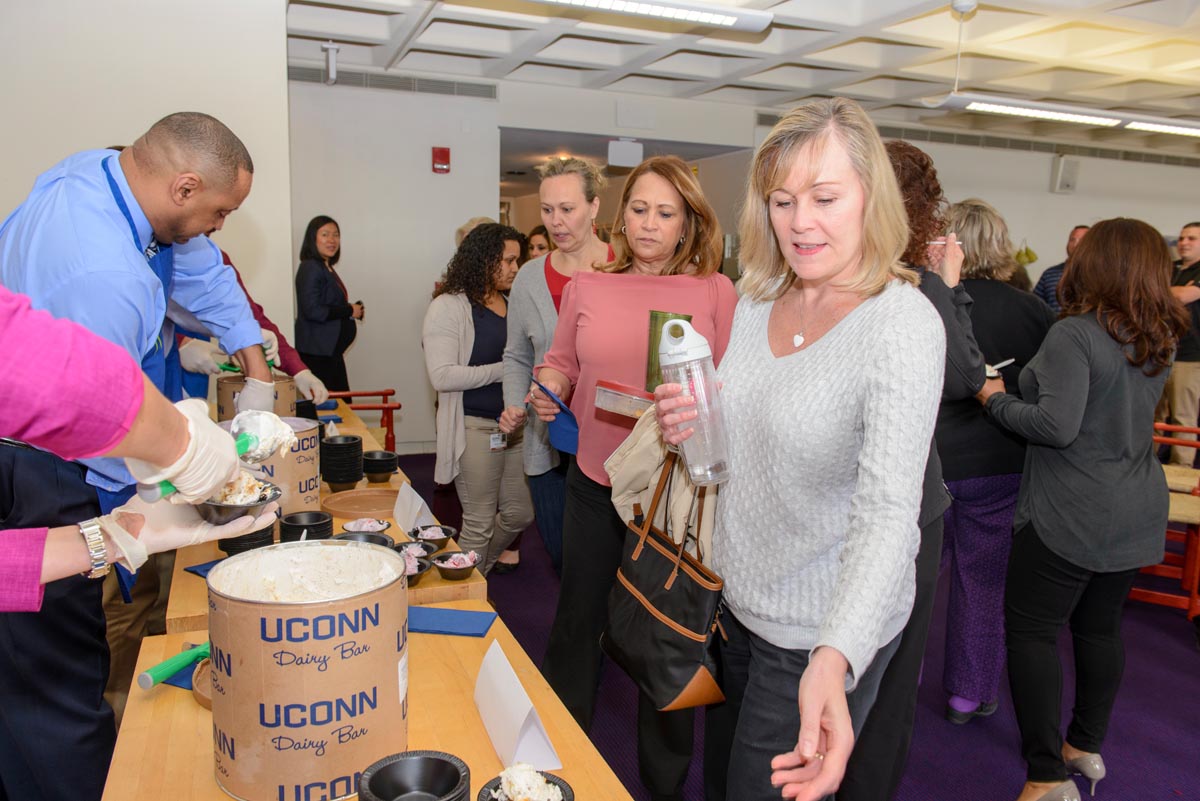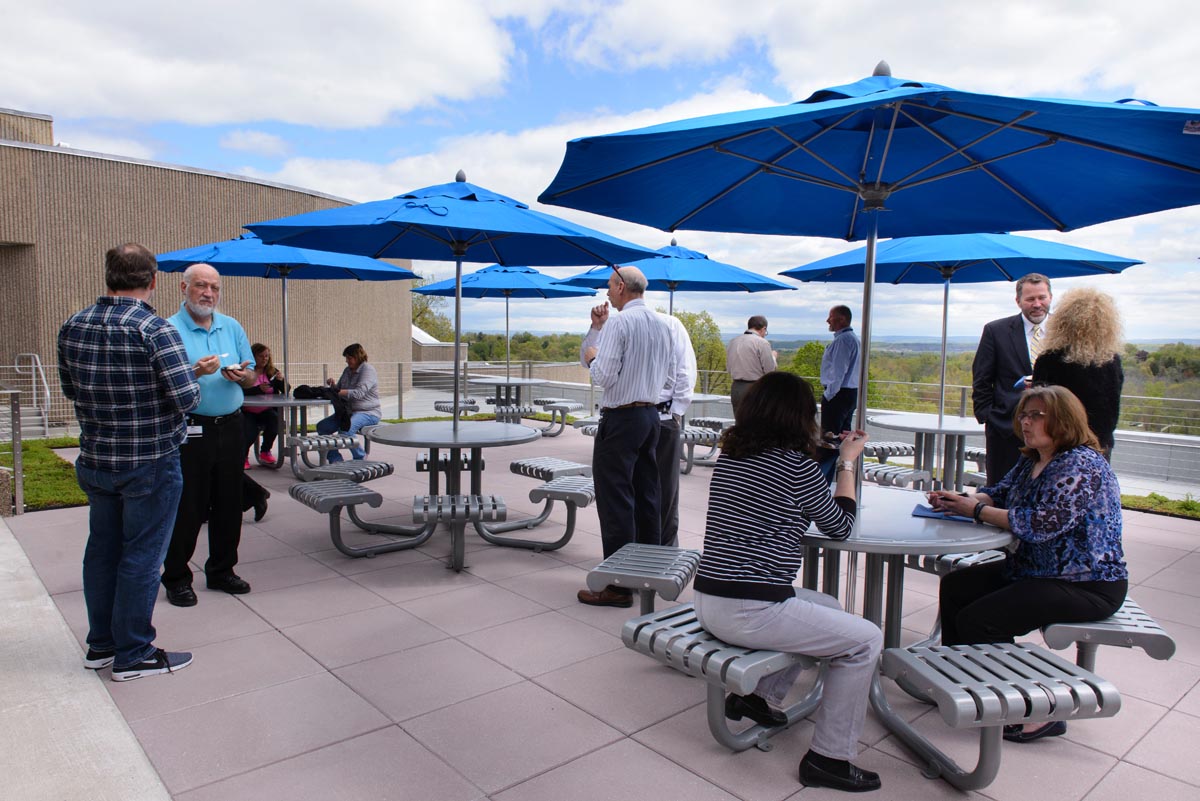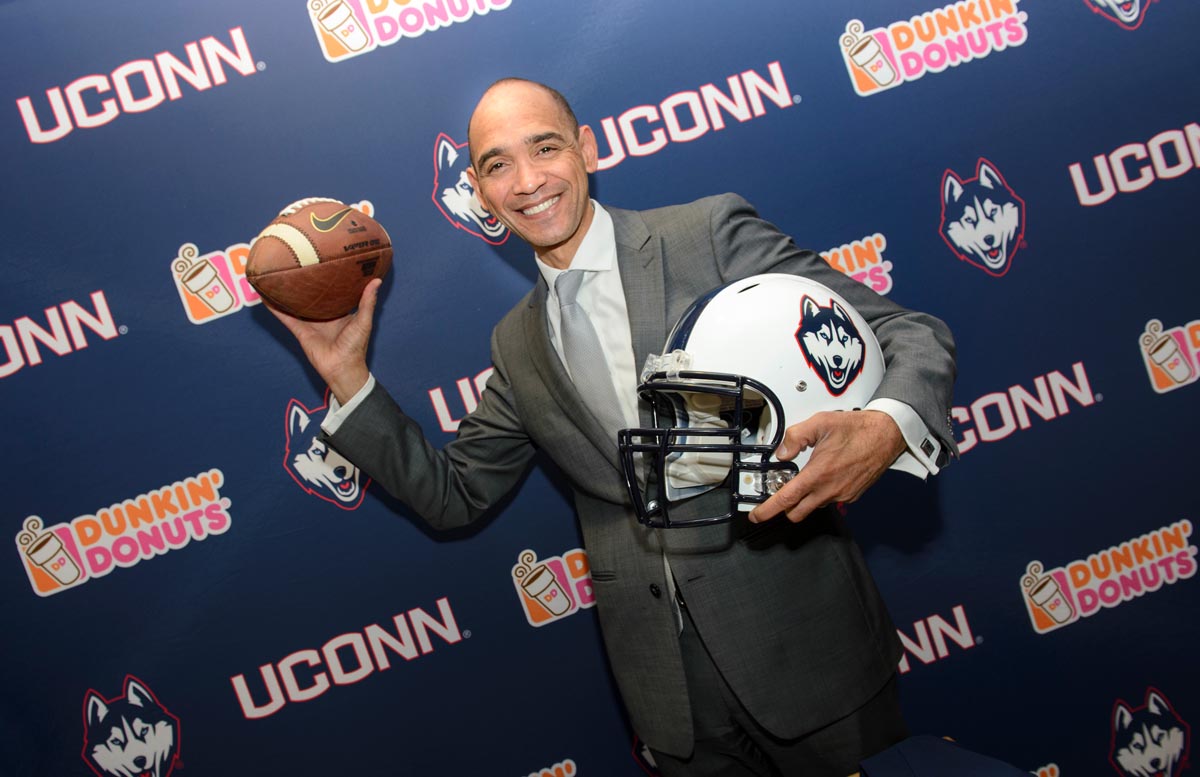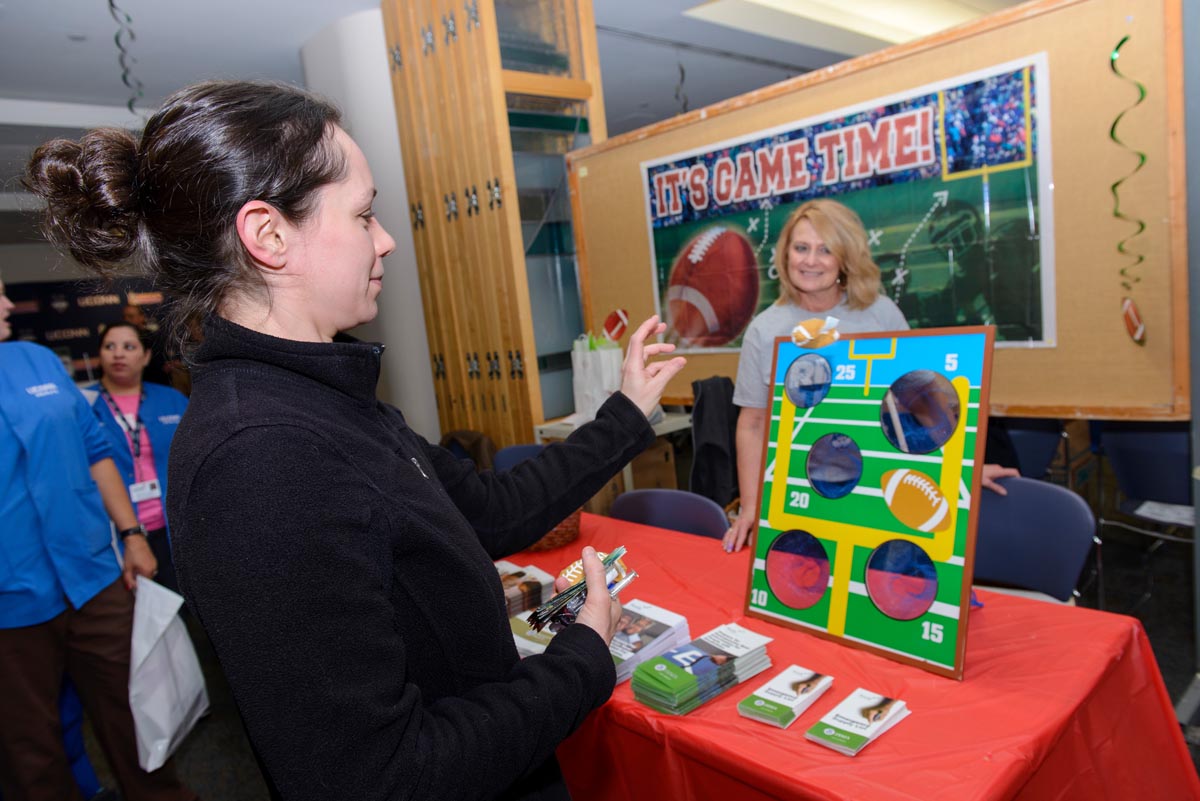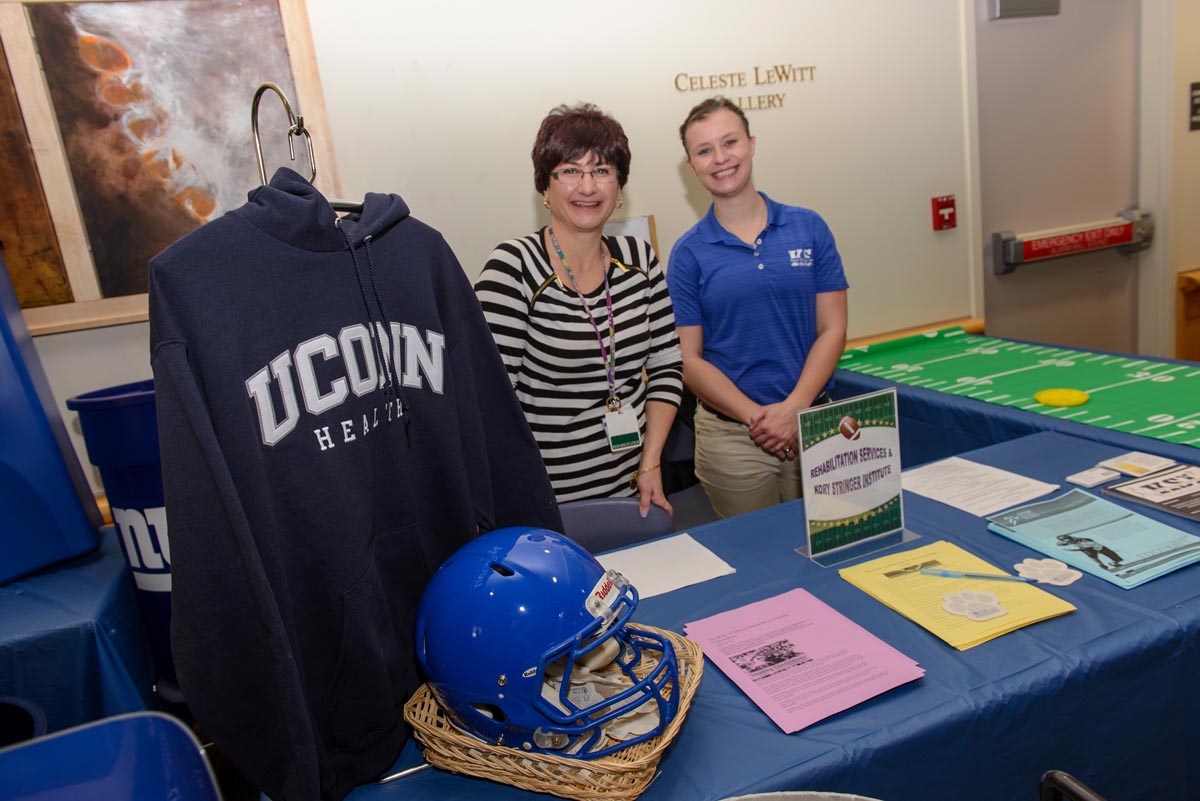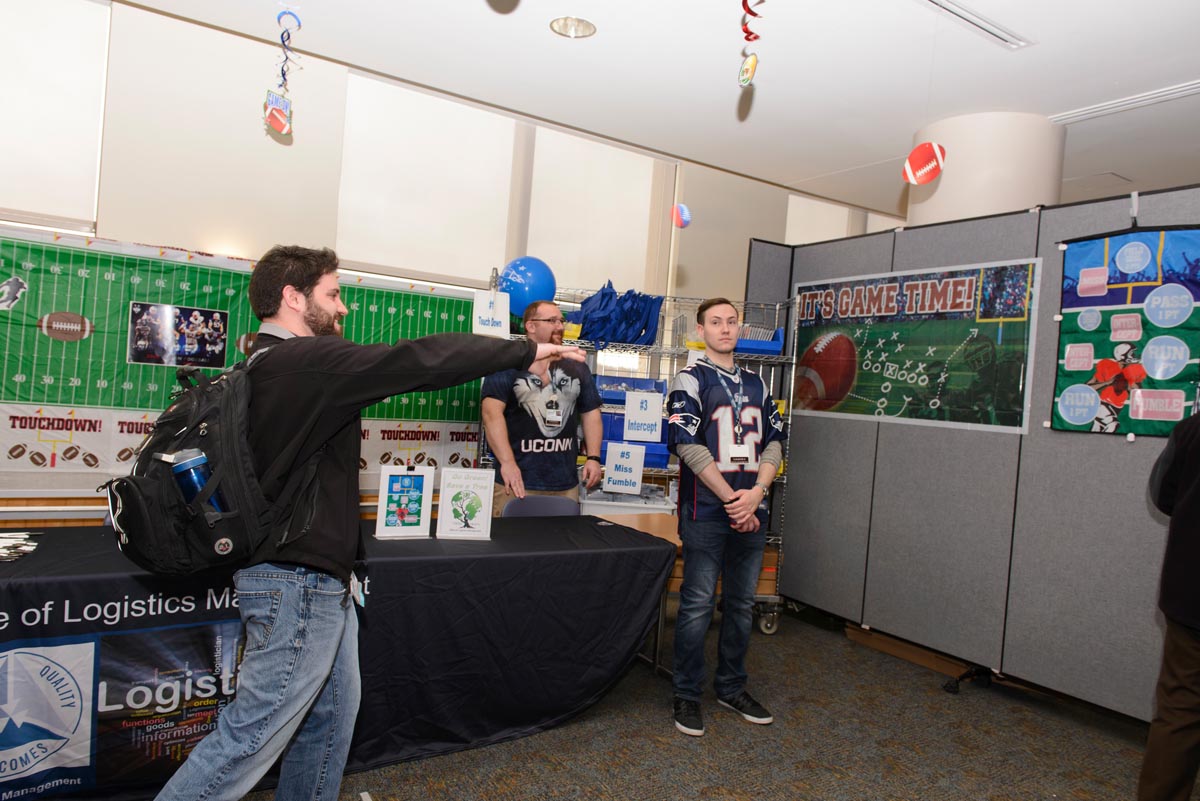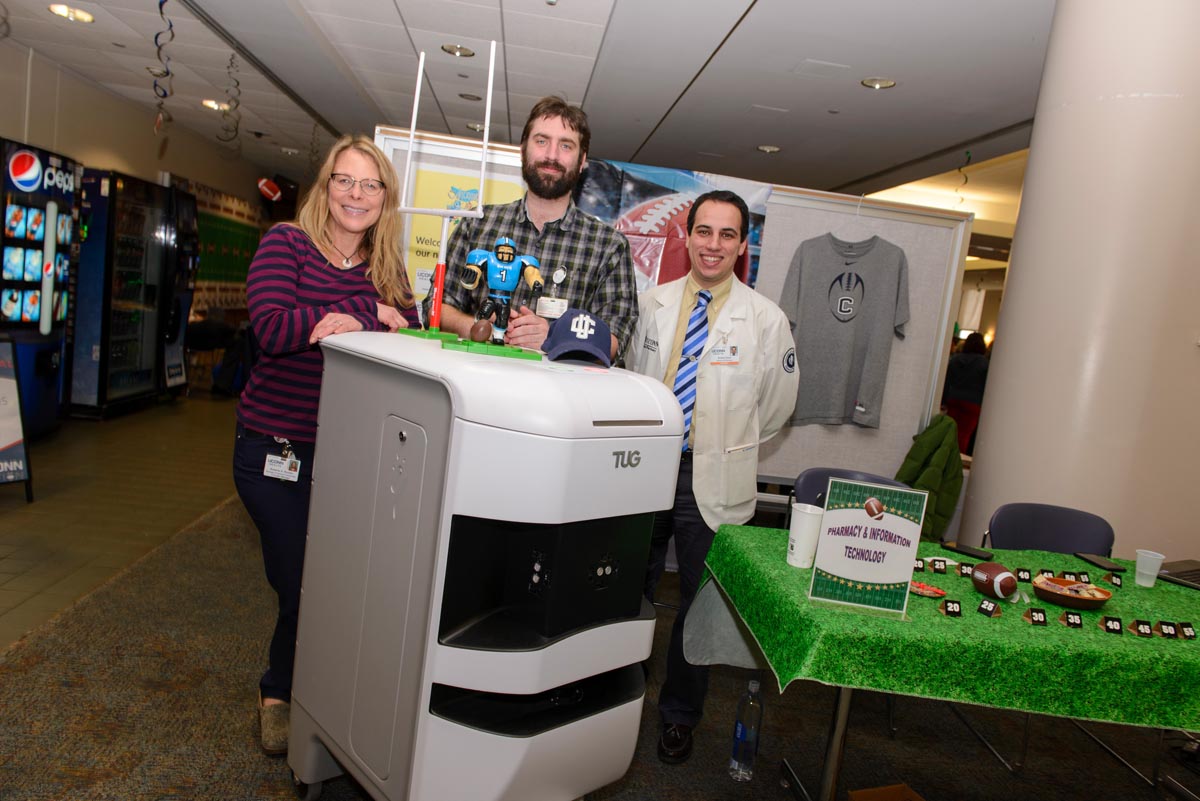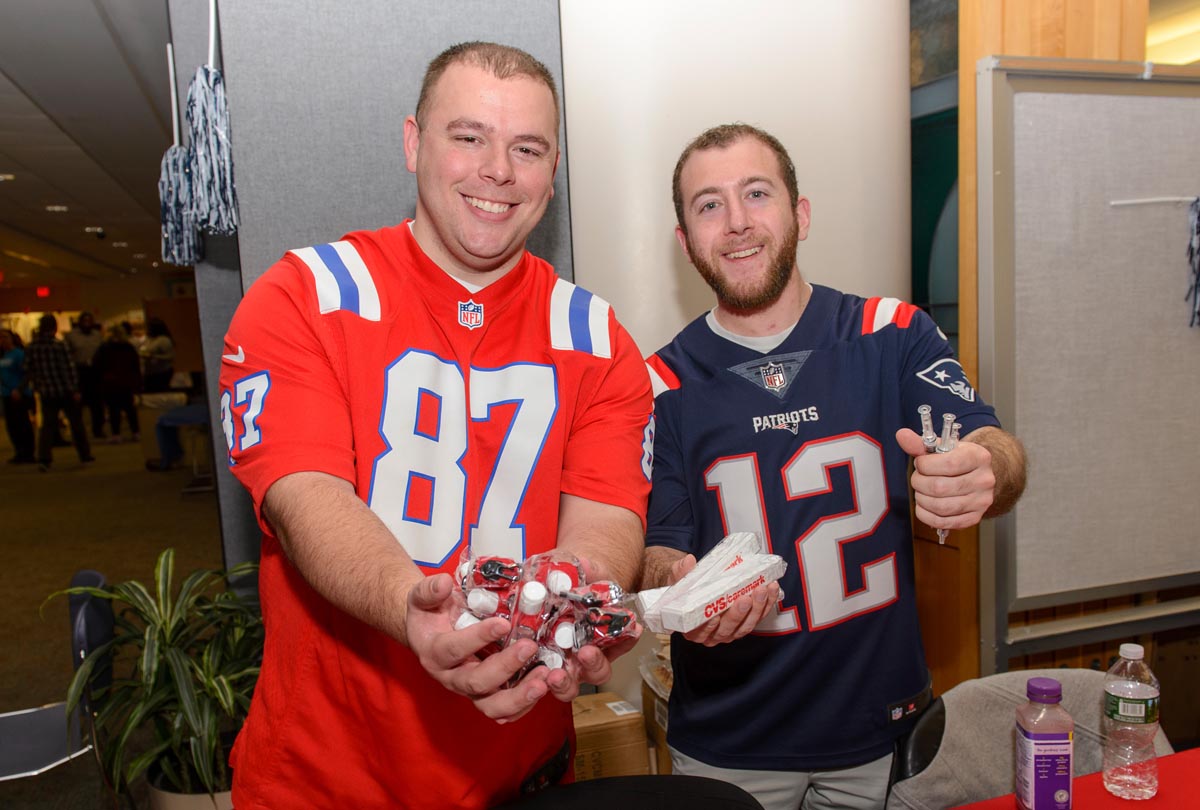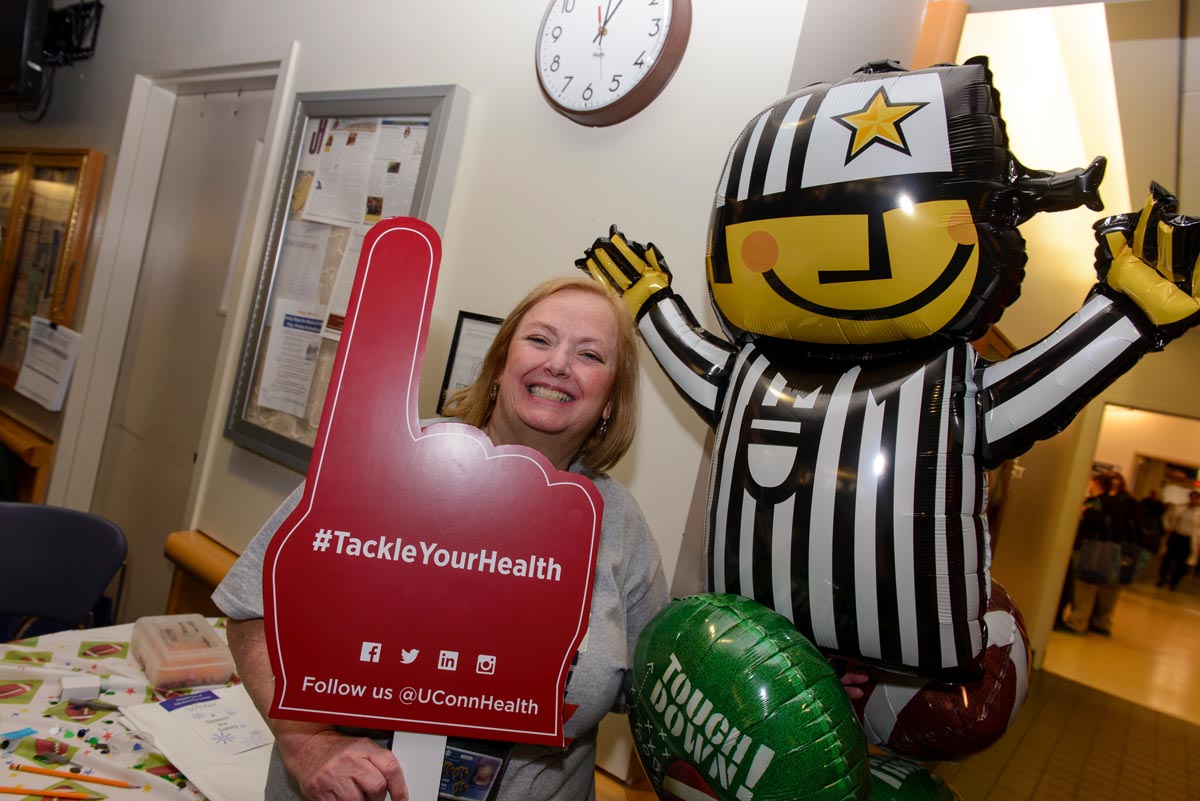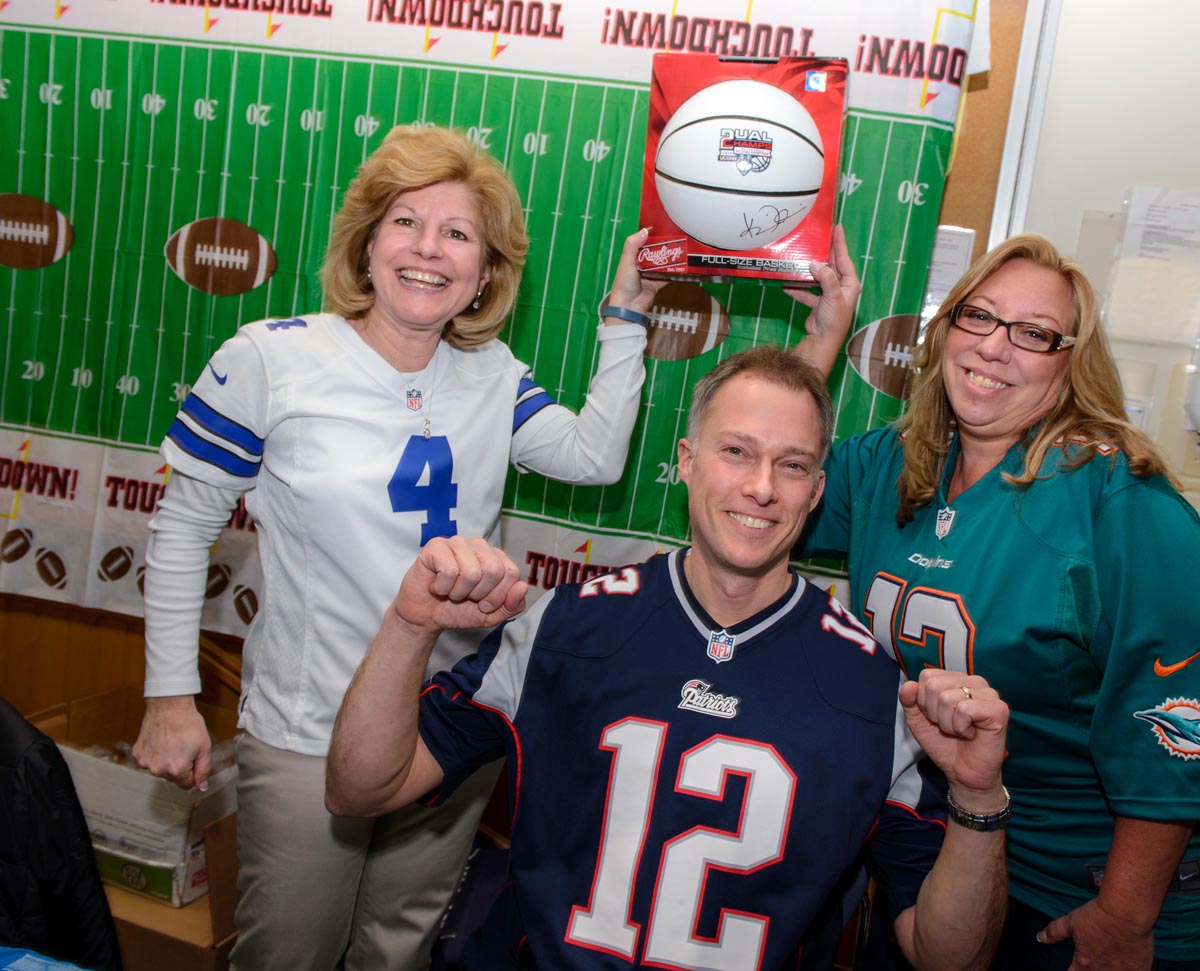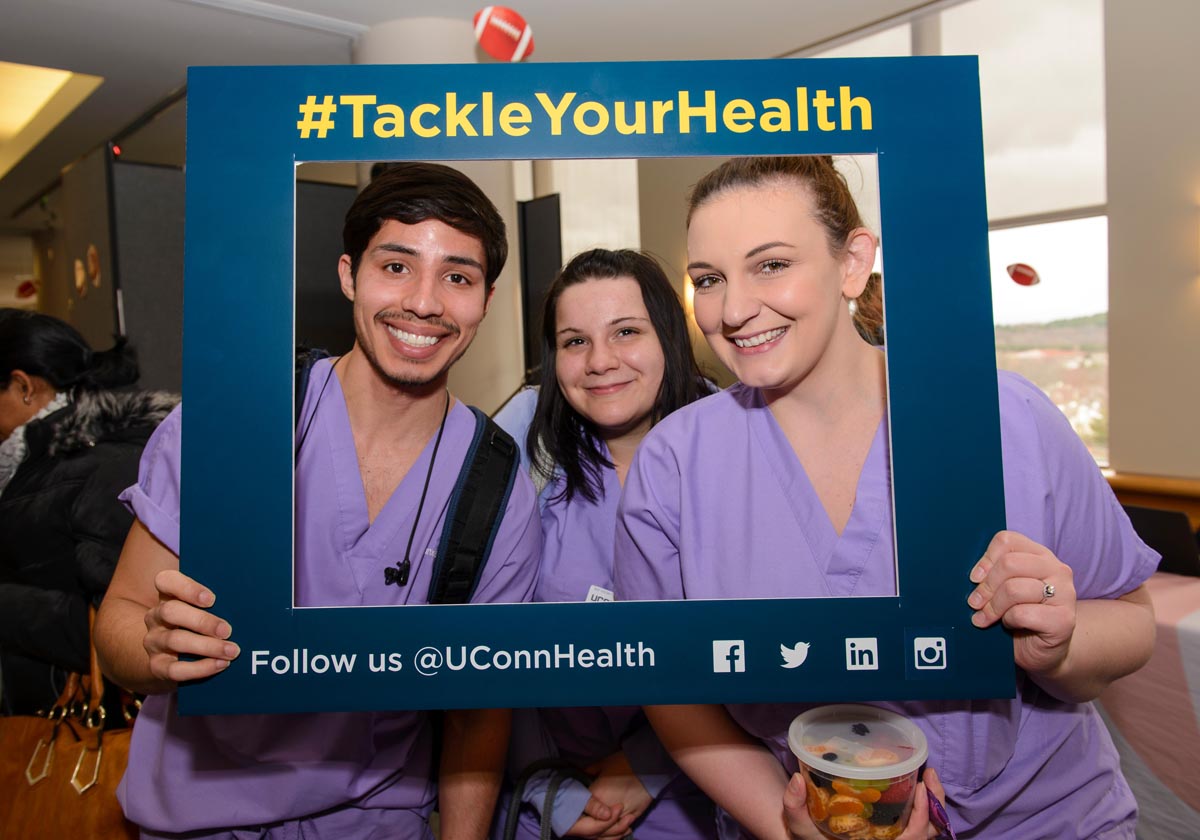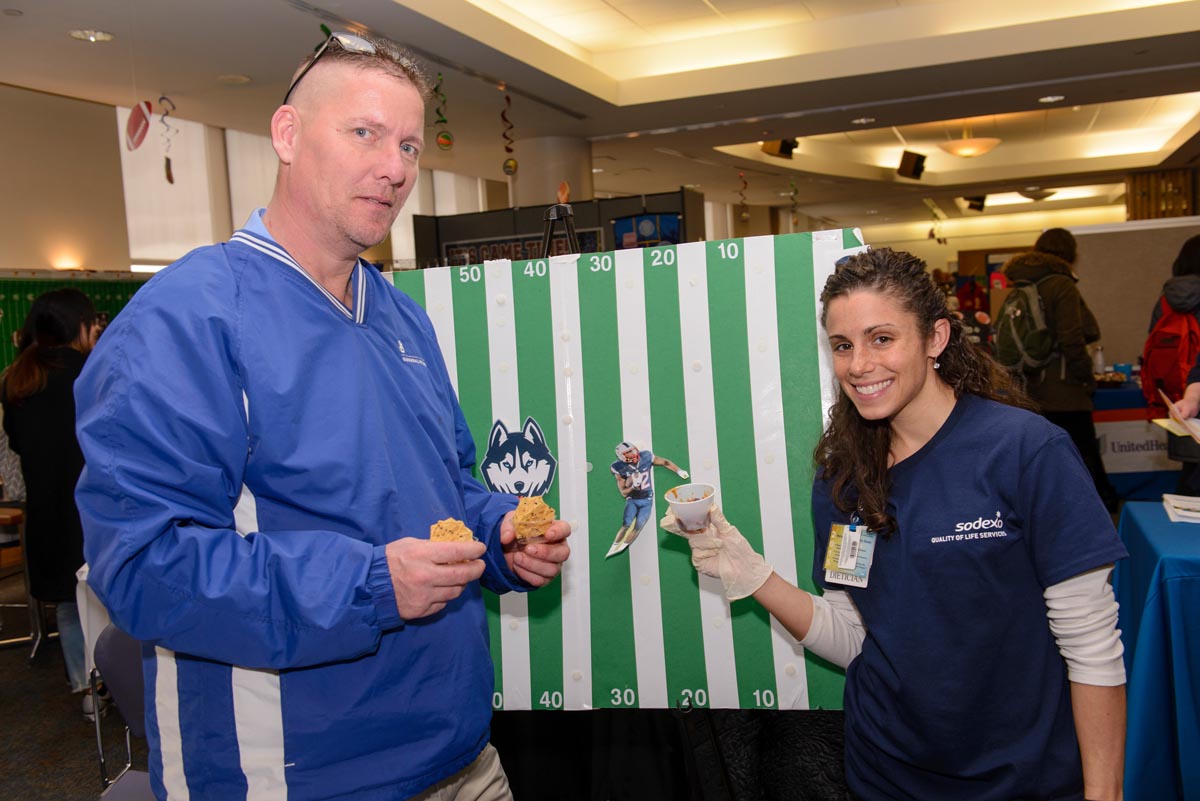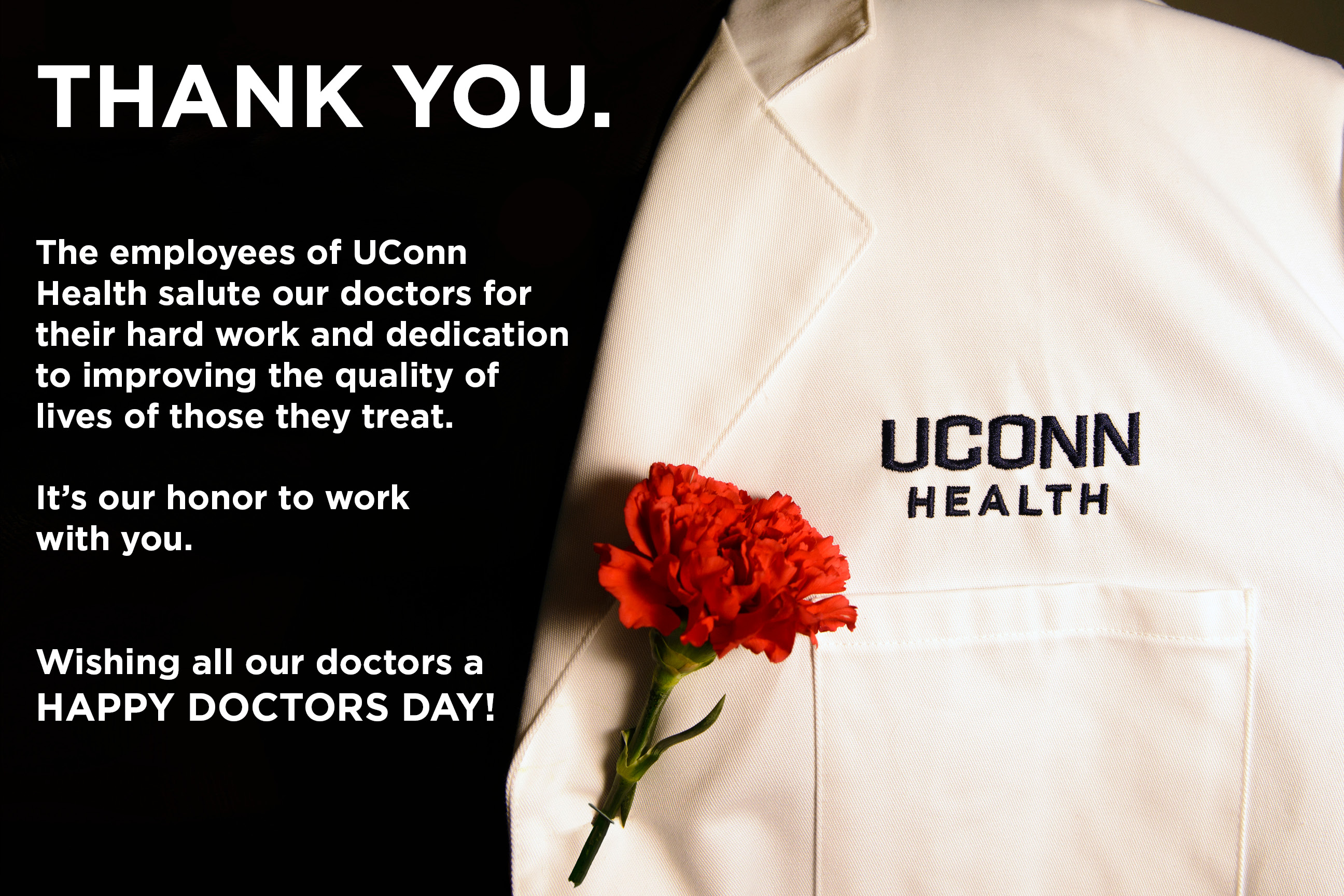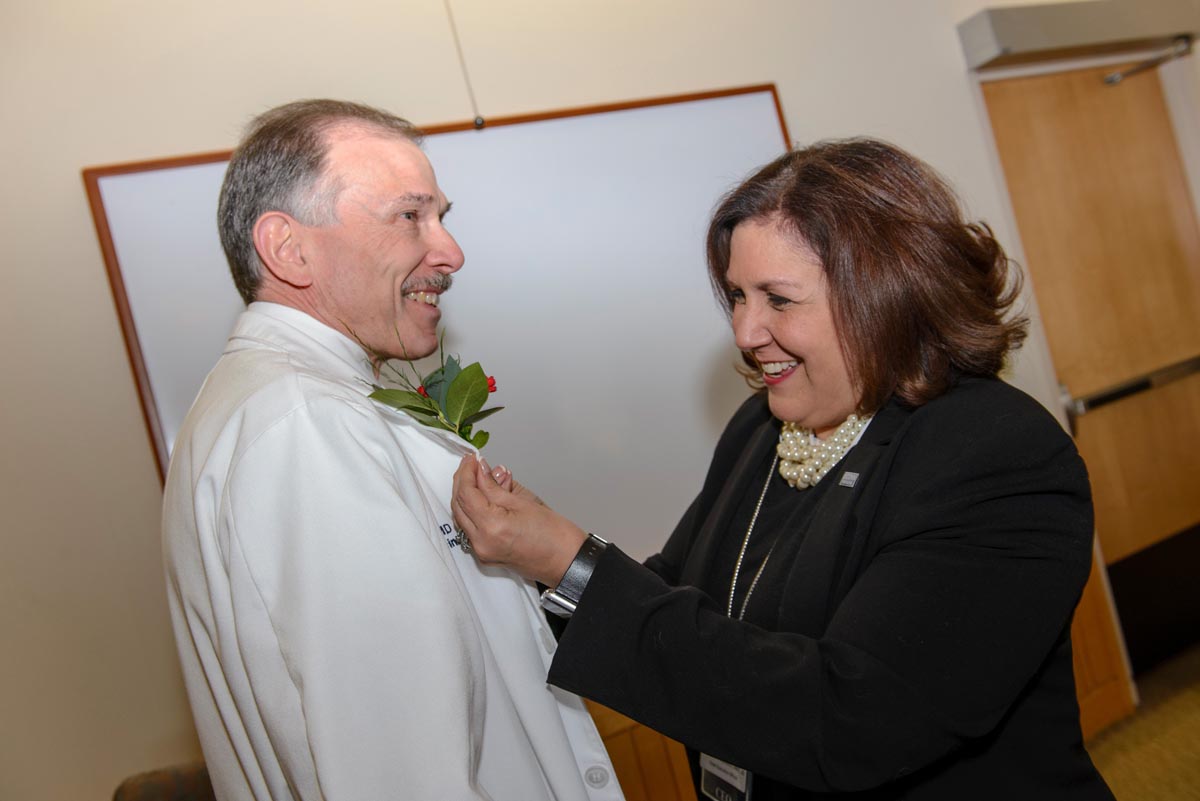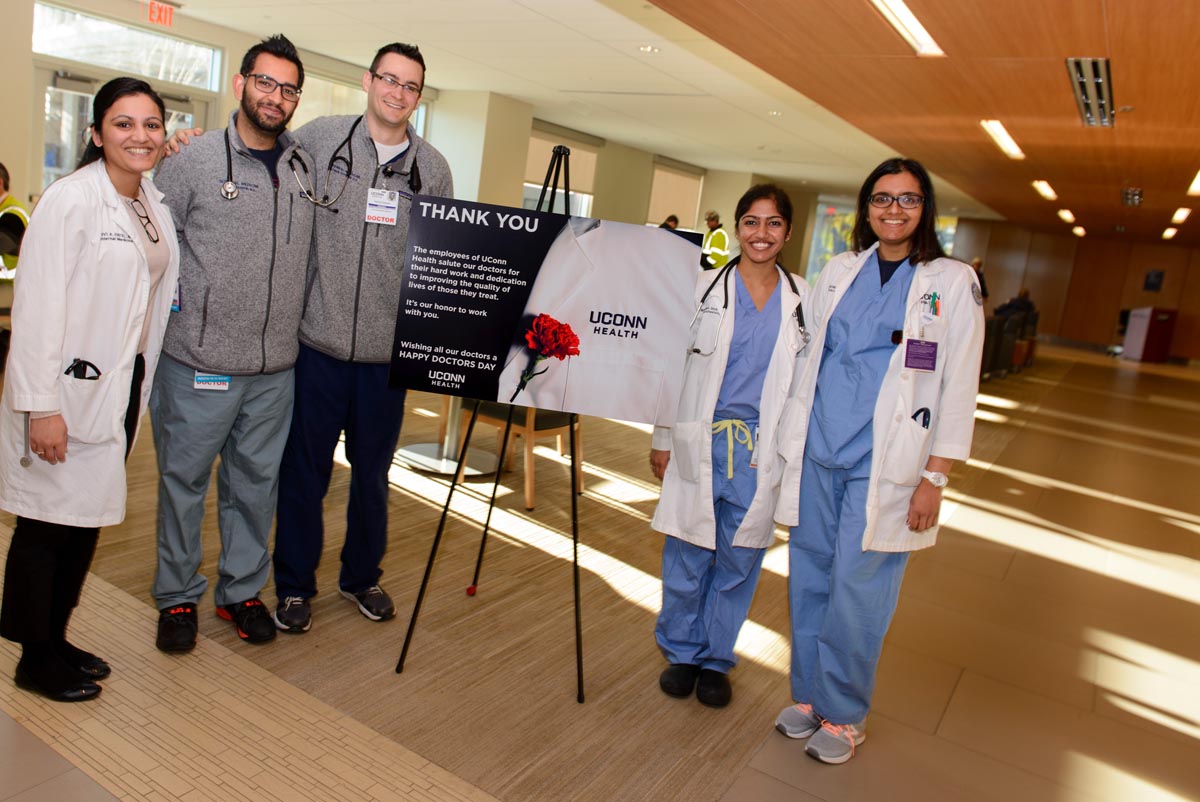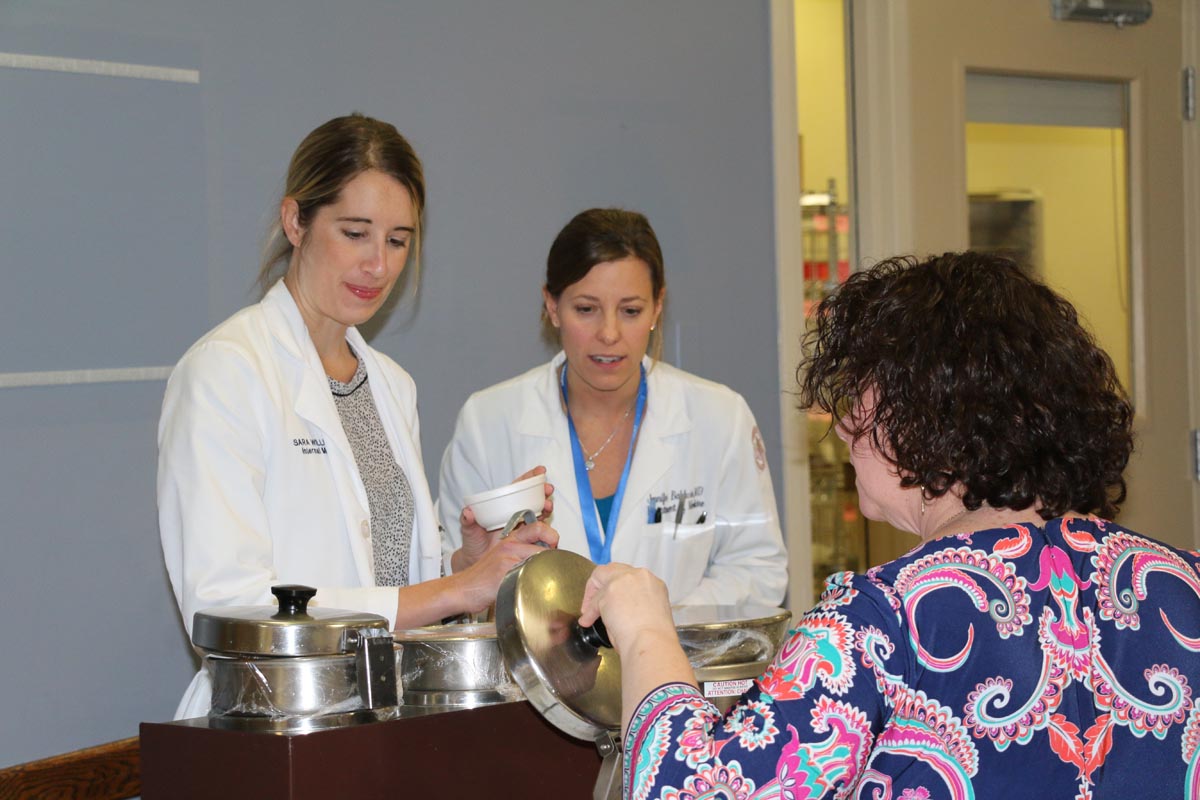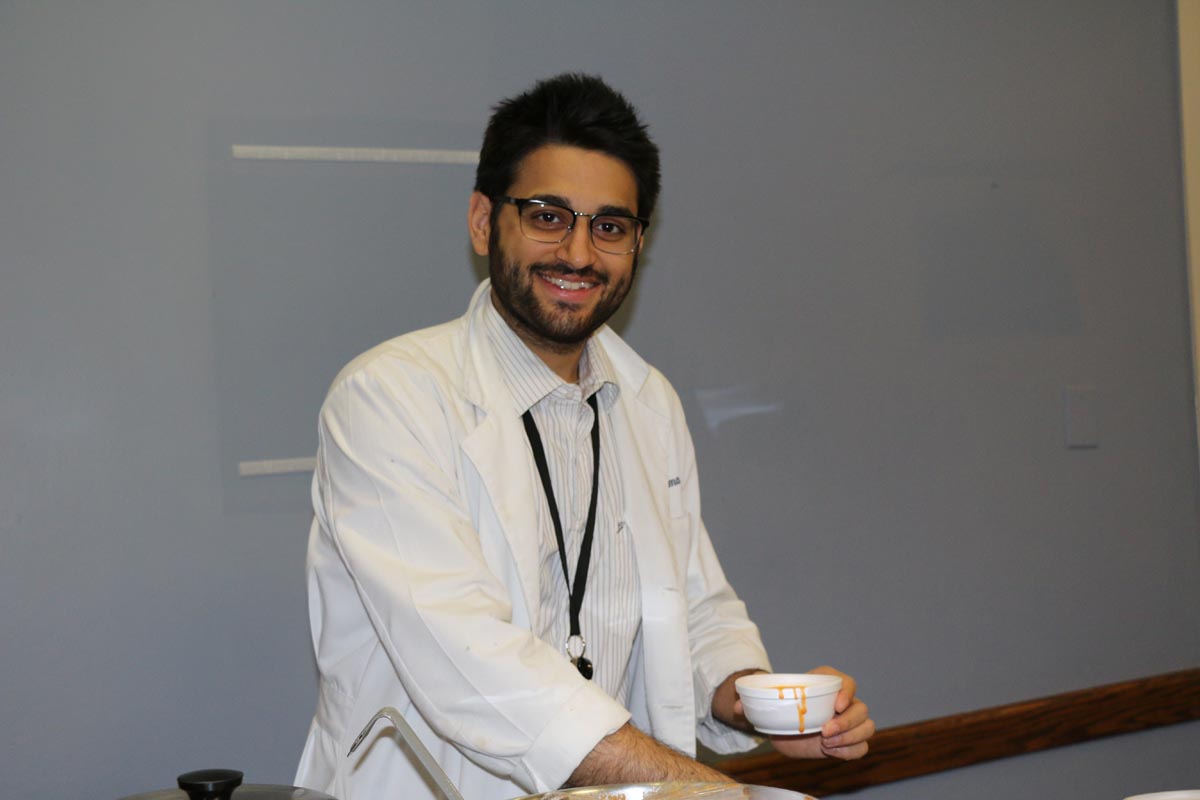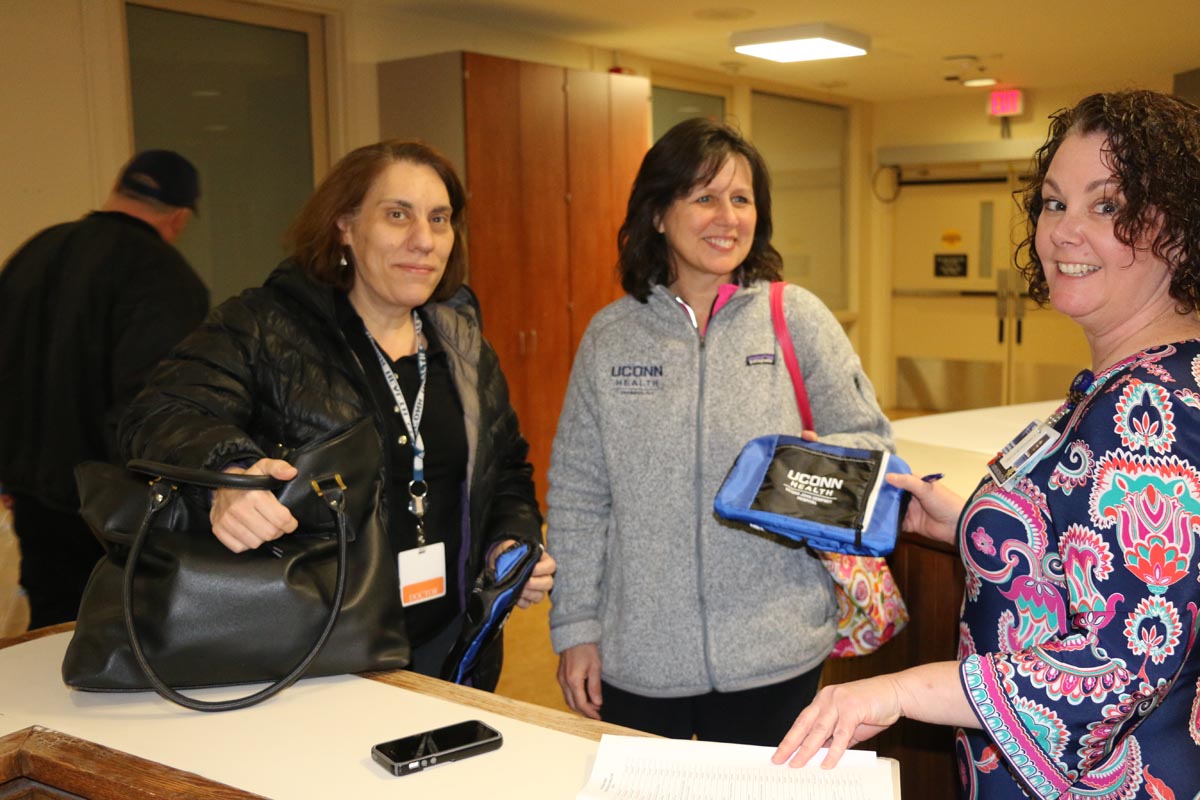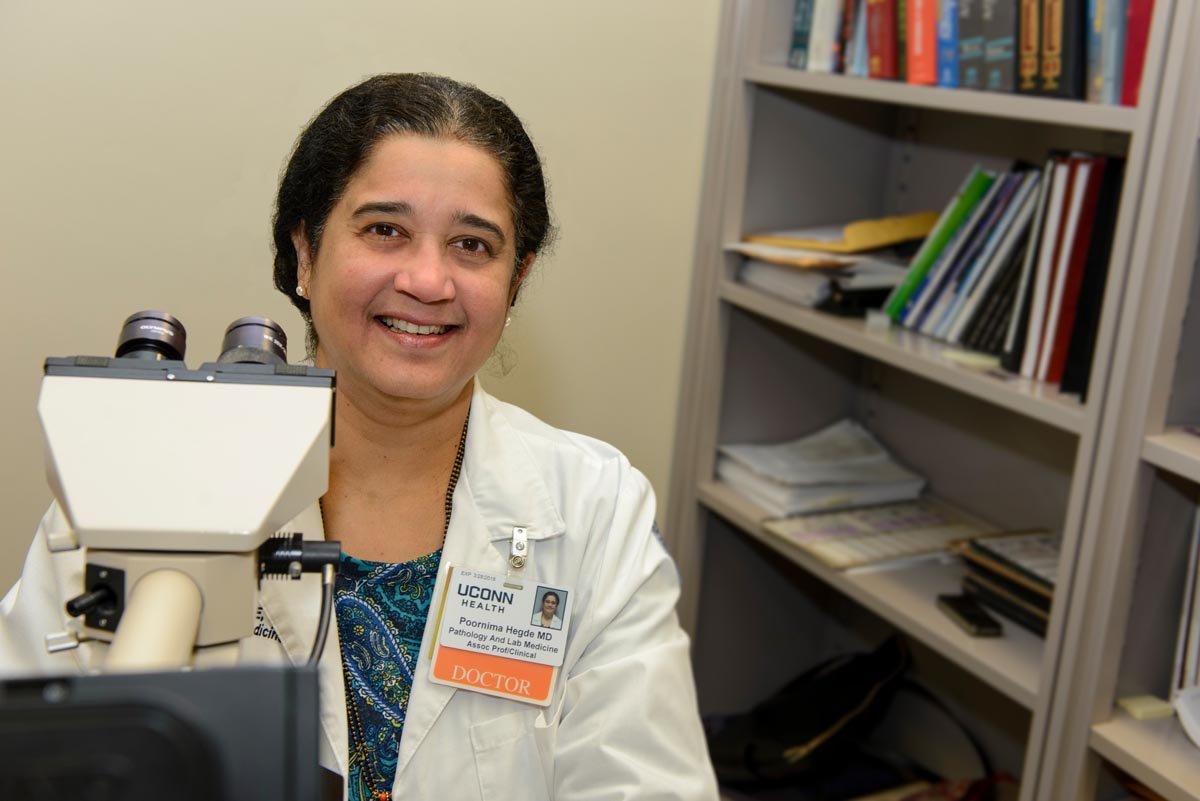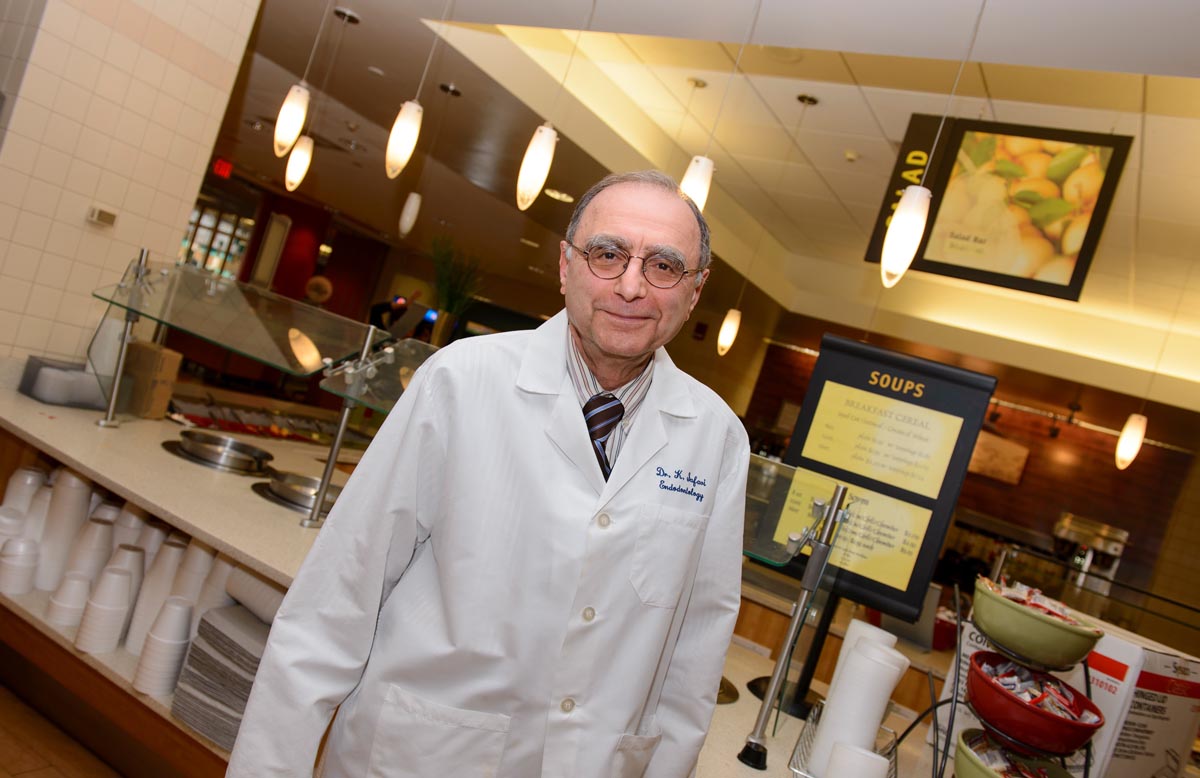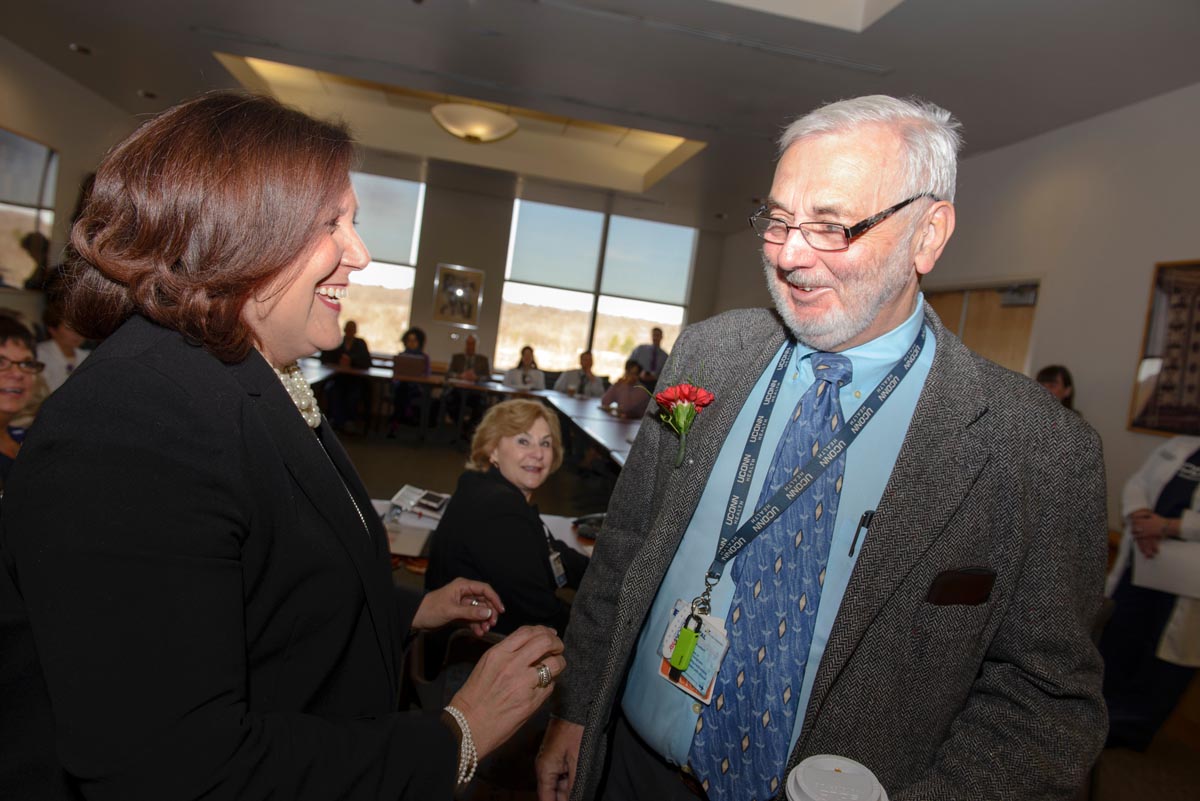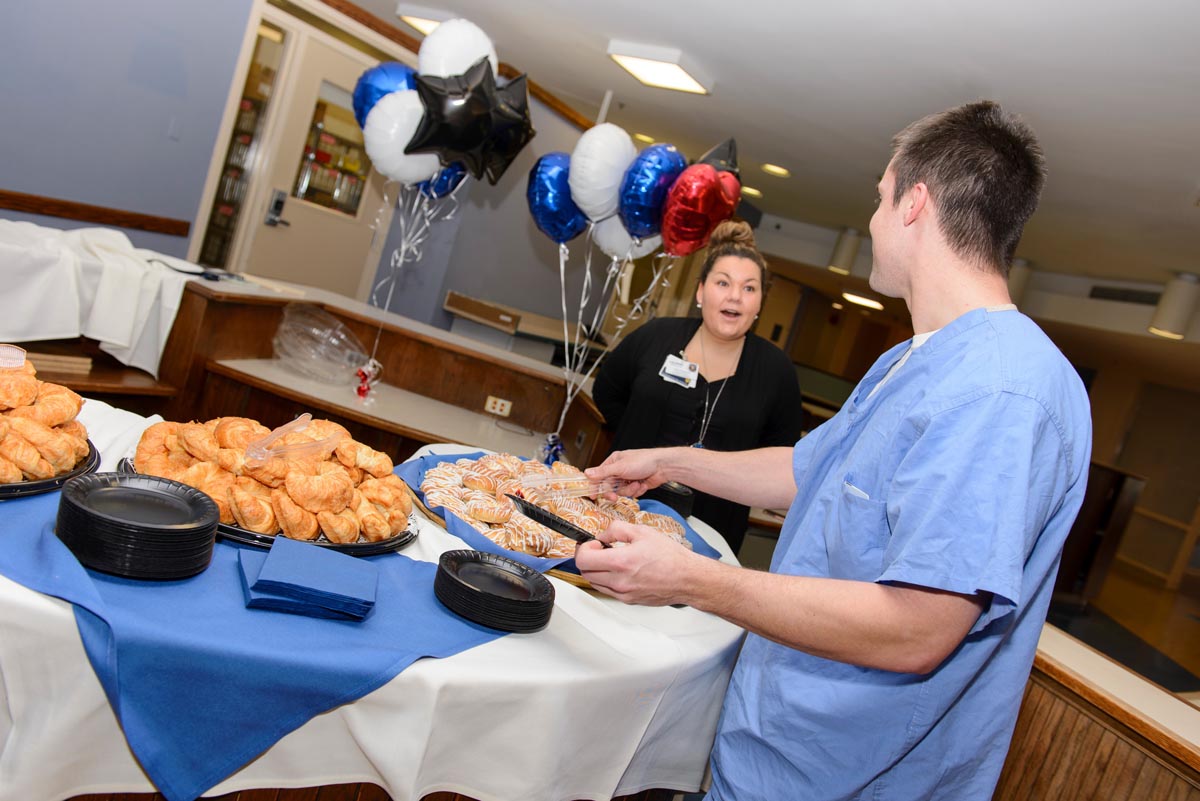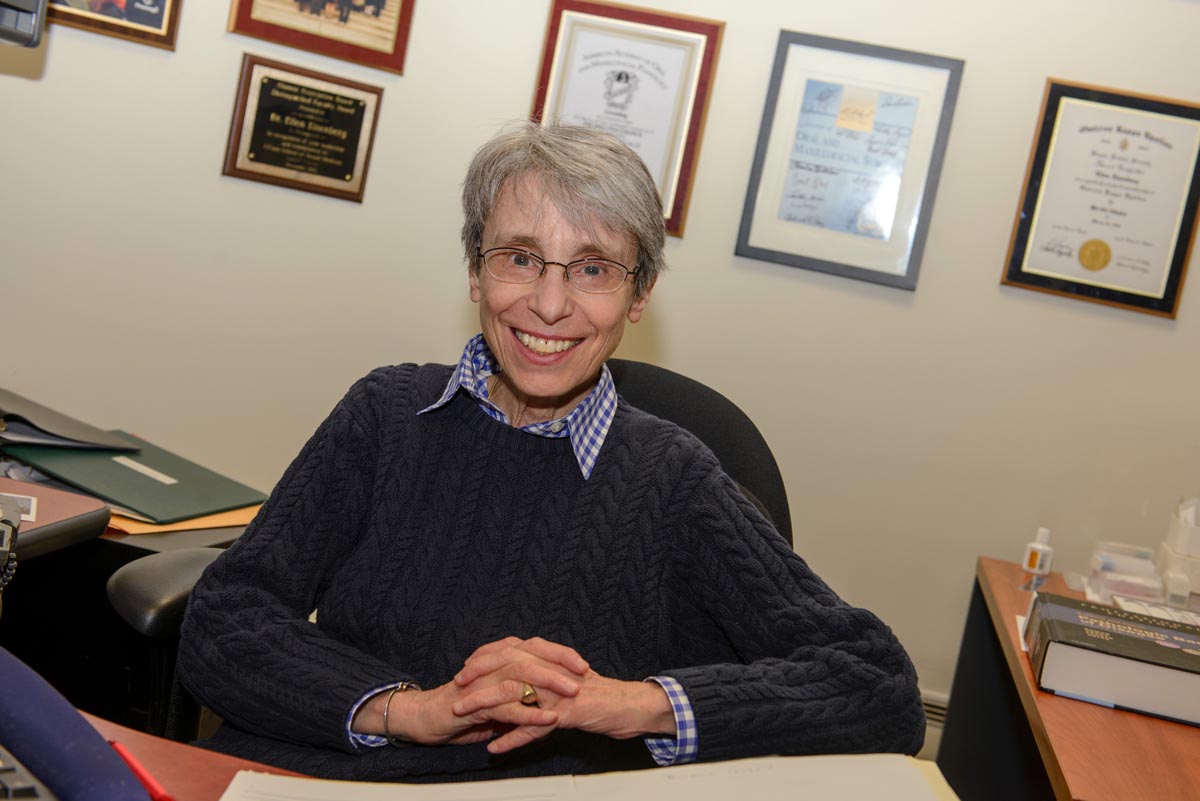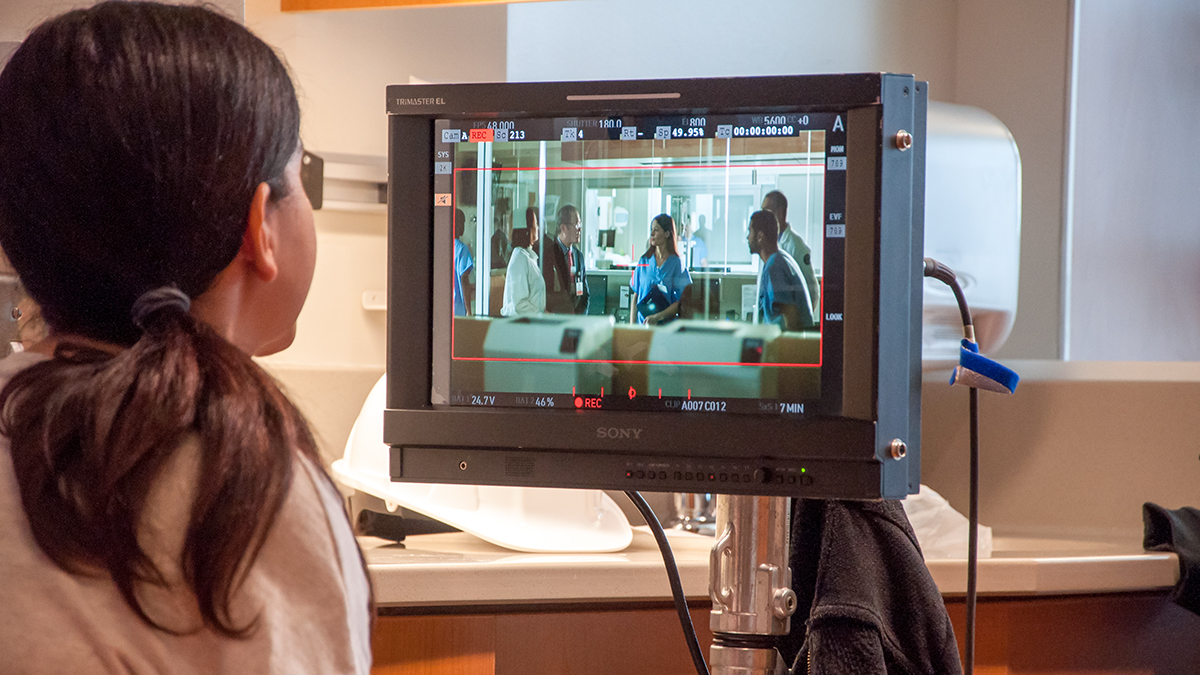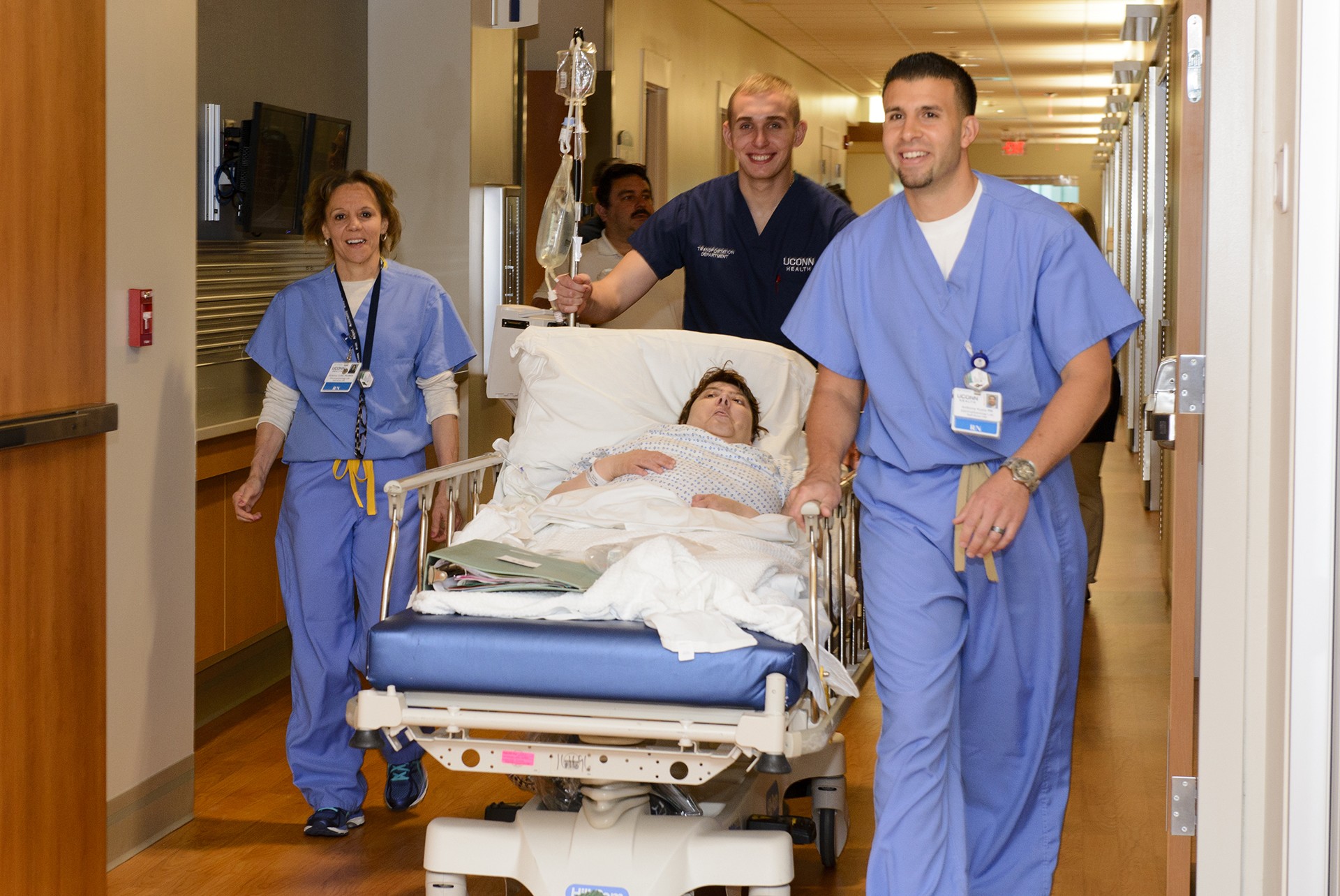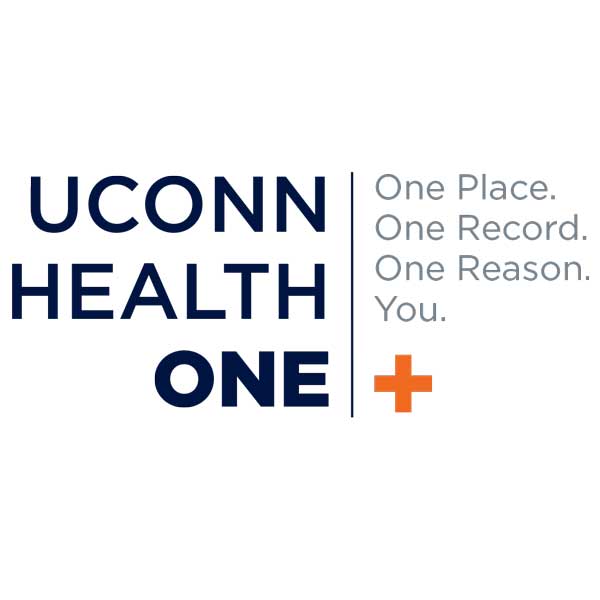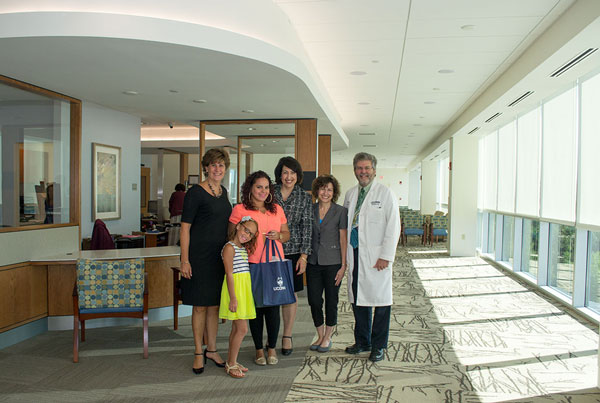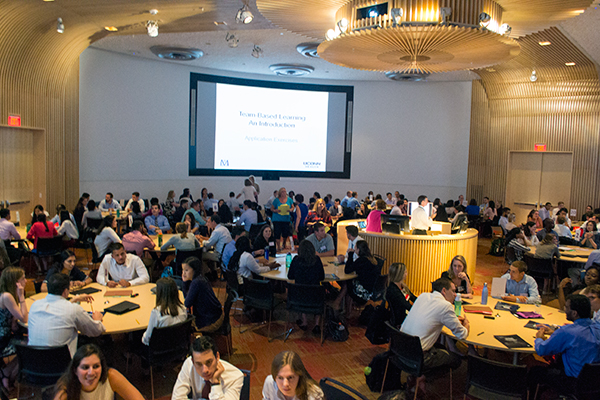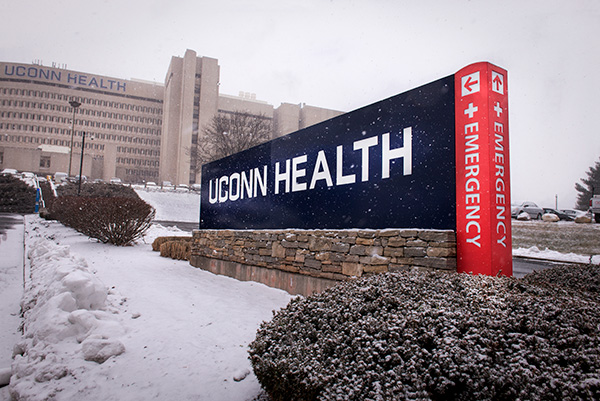Pulse
2017 Health, Safety and Environmental Fair Photos
It’s National Doctors’ Day!
The first Doctors’ Day observance was held on March 30, 1933, by the Barrow County Alliance in Winder, Georgia. The Alliance picked that day because it was the anniversary of the first administration of anesthesia by Georgia native Dr. Crawford W. Long in 1842. The first observance included the mailing of cards to physicians and their wives, flowers placed on graves of deceased doctors – including Dr. Long, and a formal dinner.
You may have noticed some of our doctors wearing red carnations today. Through the years, the red carnation has been used as the symbol of Doctors’ Day. Because of the flower’s spicy fragrance, it was often used in seasoning dishes “to preserve the body, both in mind and spirit.”
Congress designated March 30, 1991, as National Doctors’ Day. The enactment of this resolution enables the citizens of the United States to publicly show appreciation for the role of physicians in caring for the sick, advancing medical knowledge, and promoting good health.
Roberta Luby to Retire in May
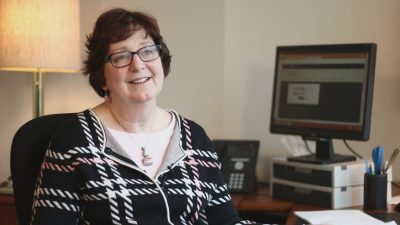
After fourteen years with UConn Health, in Strategic Projects, Clinical Systems and currently as assistant vice president for HealthONE, Roberta Luby will retire on May 1.
“By far, HealthONE – replacing our existing aging clinical infrastructure – is the most interesting and challenging thing I have done here,” said Roberta. “From first presentation in 2012, to RFP in June of 2015, to where we are today – about a year from go-live – it’s been a ride I will never forget.”
“Roberta is a proven leader who knows how to get things done,” said Carolle Andrews, chief administrative officer. “We will miss her smile, her steady hand, and the wealth of experience she brought to critical organizational projects.”
Senior leadership is working to develop an interim plan and more details will be forthcoming in the next few weeks, according to Denise Purington, interim chief information officer.
“HealthOne is a massive undertaking with ramifications across the organization,” said Dr. Andy Agwunobi, “we really appreciate Roberta’s role in getting us well down the road toward a high quality implementation by April of next year.”
“We have an extremely talented and committed HealthONE team in place, poised to achieve a wonderful transformation. I look forward to seeing the results after go-live and the impact it will have on all parts of the organization,” Roberta concluded.
The Pulse Marks One Year Anniversary
Phishing Tips: Beware of Email Links and Attachments
Recently, some Connecticut state employees responded to a well-crafted “phishing” email directing them to click on a link to what appeared to be the CORE-CT website in order to retrieve their W-2. This was a fake website, and the employees who followed the link and entered user ID and password unwittingly gave the perpetrators access to their CORE-CT login credentials and all of the personal information contained there, such as Social Security number, home address, birth date, etc.
Armed with this information cybercriminals can file a phony income tax return in your name, open credit card accounts and attempt to steal funds in your bank accounts or retirement savings accounts.
Here are some tips to protect yourself from phishing:
How to Spot a Phishing Email
Phishing is a deceptive attempt to pose as a reputable entity or person in electronic communications, such as email, IM or social networking.
Unofficial “From” Address. Look for a sender’s email address that is slightly different (but similar to) an official email address. The most recent phishing attack came from an e-mail address that read: donotreply@ct.gov <ssellick@tbaytel.net>. The second part of the email address shows that it came from outside the system.
Urgent Call for Action. Cyber criminals include urgent “calls to action” in emails to get you to react immediately. Be wary of emails containing phrases like “your account will be closed,” “your account has been compromised,” or “urgent action required.” The cybercriminal is taking advantage of your concern to trick you into providing confidential information immediately.
Generic Greetings. Cyber criminals send thousands of phishing emails at a time. They may have your email address, but they seldom have your name. Be skeptical of an email sent with generic greetings, such as “Dear Customer” or “Dear Member.” The most recent attack targeted our state’s Enterprise Resource Planning system Core-CT.
Link to a Fake Website. To trick you into disclosing your user name and password, cyber criminals often include a link to a fake web site that looks like (sometimes exactly like) the sign-in page of a legitimate web site. Just because a site includes a company’s logo or looks like the real page doesn’t mean it is! Logos and web site layouts are easy to copy. You can detect a fraud by using your mouse to “hover” over the link with your cursor. This will reveal the website to which you are being directed (and it may not be the one you expected). The best practice is to refrain from CLICKING ANY LINKS IN EMAIL. Navigate to the site by your normal means.
Legitimate Links Mixed with Fake Links. Cyber criminals sometimes include authentic links in their spoof pages, such as to the genuine privacy policy and terms of service pages for the site they’re mimicking. These authentic links are mixed in with links to a fake phishing web site in order to make the spoof site appear more realistic.
Other Characteristics of Phishing Emails:
- Spelling errors, poor grammar, or inferior graphics.
- Requests for personal information such as your password, Social Security number, or bank account or credit card number. Legitimate companies will never ask you to verify or provide confidential information through an unsolicited email.
- Attachments (which might contain viruses or keystroke loggers, which record what you type).
What to Do if You Are a Victim of a Phishing Email.
If you have clicked on a suspicious email link and feel your personal identifiable information may have been compromised, here are a few steps you can take to protect yourself.
- Change your passwords for all employer software systems, and all personal bank, retirement and financial accounts.
- If you have not already done so, register your financial and banking accounts for online access only and choose challenging security questions with answers that only you would know.
- Regularly review your bank, credit card, retirement and financial account(s) for any unauthorized activity.
- Regularly review your credit report for any unauthorized activity. Under federal law, you are entitled to one free copy every 12 months. You may obtain a copy by calling 877-322-8228 or online at annualcreditreport.com;
- Learn more; by visiting the Federal Trade Commission’s website at ftc.gov/credit.
The Department of Administrative Services will be introducing a new Cyber Security Awareness training program soon. It will include further information on how to use email safely. If you are suspicious about any email that you receive, contact the IT Help Center at x4400 or via email: helpdesk@uchc.edu.
Lifeless Infant Revived by UConn Health Clinical Lab Staff
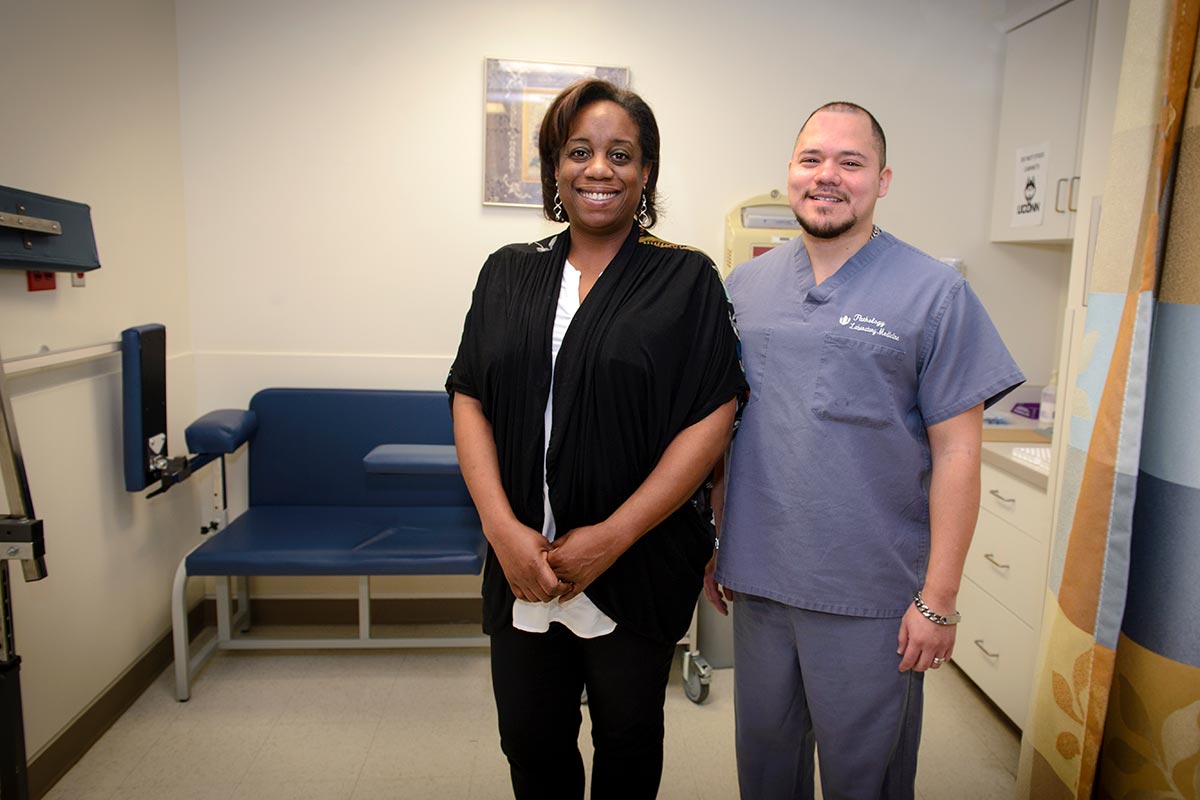
Quick action by UConn Health staff prevented a tragedy in the clinical lab last week.
A horrified woman burst out of a consultation room holding her one-month-old daughter, who had stopped breathing.
The closest person was clinical coordinator Latonya Robbs-Joseph, who took the infant and started CPR. Someone else called 7777, the internal emergency number.
“She was red, turning purple,” she says. “There was no response. She was limp.”
Laboratory assistant Juan Carlos Restrepo then gave it a try.
“The baby felt like a doll, with no movement, and she was changing color,” Restrepo says. “After I would say 20 to 30 seconds, the baby’s stomach releases as I compress, and then I start hearing the baby cooing. I pick up the baby, she’s looking at me, I’m looking at her, and her chest starts to move. As I look at the mother, the mother was shaking and crying, then I saw the biggest smile. And the baby then rested her head right on my chest after that. And that, well, that was a moment.”
Restrepo says after he handed the baby back to the grateful mother, he was overcome with emotion and had to step out into the hallway.
“It was a very moving experience,” Robbs-Joseph says. “I think it was that parental instinct. We’re both parents. People were like, ‘What did you think?’ I didn’t. Instinct just kicked in, and I was like, ‘God, please save this baby.’”
Both Robbs-Joseph and Restrepo are certified in infant CPR.
“All we want to do is serve, and that was one of those given moments where we put that to practice, 110 percent,” Restrepo says. “This is one of those moments that everybody just chipped in, everybody just did their part, and the willingness of everyone is what stood out. We saved a life, as a team.”
Robbs-Joseph says she hopes this story inspires others to be trained in infant CPR.
“It doesn’t hit you, but then when you think about it and you still can see that little baby in your hands, it’s like, ‘Thank God that I was there, thank God that I was trained, thank God we didn’t hesitate, and just kicked into mode,” she says.
Looking at Us: Alexis Crean, Human Resources
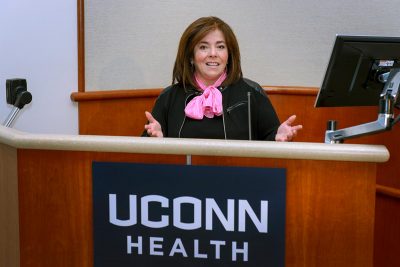
If you’ve attended an employee recognition event, employee orientation, or a professional development course, chances are you’ve met Alexis Crean, organization and staff development specialist in the UConn Health Department of Human Resources. And, chances are her role runs counter to your preconceived notions about HR. Alexis has been with UConn Health for 23 years, the last 19 in HR. She lives in East Hampton with her husband and two teen daughters.
Q: What are some of your responsibilities in UConn Health HR that perhaps historically are not associated with human resources in general?
I know that this might sound cliché but I really do believe that Human Resources is about what we can do to help the organization, and its people, become more successful. I have been the lucky recipient of working for some great individuals who have helped me shape my career and that is why I choose to give back every chance I get. I have found in my 23 years with the organization that one of the best ways to do that is to build strong relationships. It’s about having a one-on-one conversation with the new manager who isn’t getting the most out of her team, and then helping her to get more out of that team. It’s about helping employees understand their role in the future and why “our” organization values them. Yes, we all have to make sure that we are abiding by the rules and regulations but as an HR professional I always keep the person I am serving front and center, giving him or her the best I can offer.
Favorite movie:
“Ferris Bueller’s Day Off”
Favorite musician:
Mozart
Favorite place to visit:
I love going to NYC any chance I get
Famous person you’d most like to meet:
Coco Channel
Favorite delicacy:
Colombian Empanadas
Q: How do you make your unique role in HR your own?
My mom always told me, “Bien predica quien bien vive”—“Lead by example.” That’s why I always keep a look out for ways that we can show employees that Human Resources really does care and that it’s not just talk. So if I can make an employees’ experience that much the better by offering a meaningful recognition event, or providing compassion during a difficult time, I am your person. People often say, “I wish I had your job because it looks like so much fun,” and I respond, “Thanks so much for saying so, and know that it is done with much thoughtfulness and attention to detail,” because I enjoy giving back to a community that I respect so much.
Q: What is something about UConn Health HR that you think is generally misunderstood?
To employees, HR could be the person they see only when something goes wrong. Yes, we‘re there when someone gets fired, during exit interviews or disputes, so it’s easy to see why Human Resources is commonly misunderstood. In my experience, being an HR professional is a constant balancing act of being an employee advocate, maintaining compliance, and acting in the best interest of the organization, ensuring that employees get recognized and offering resources to assist in developing their work and life balance.
Q: What do you find most rewarding about your role?
I am especially proud of the gift I have of visual storytelling. From the age of 5 years old I have been telling stories through pictures. I never thought that my passion would transcend into my daily work. It is so rewarding for me to take people’s messages and create a presentation or a visual that inspires understanding, action and change.
Q: Anyone who’s worked with you knows you always bring such positive energy. How do you maintain that so consistently?
Thank you, that is very kind of you to say! I subscribe to the Positive Attitudinal Effect. Meaning, the greatest thing about attitude is that it is the one thing we all have the ability to control. It’s a choice. You could say that my positive attitude is my secret sauce. A positive attitude has a positive impact on my productivity, work quality, service, innovation, and the emotional bond I feel with my colleagues, customers and family. It’s what I am trying to teach my daughters to practice, every day.
Q: What’s something you like to do outside of work?
We love our community and proudly give back to it through our family charity, the Turkey Plunge, which has raised $166,000 over the last seven years for our local food bank. There is something very satisfying about bringing together people, have some fun and making a difference in people’s lives!
UConn Health Faculty on Best Doctors List
Hartford Magazine’s Best Doctors® list includes 58 UConn Health faculty members practicing in such areas as dermatology, geriatrics, surgery, orthopaedics, and obstetrics and gynecology. The list was drawn from the database of Best Doctors in America, an independent service that offers second opinions online.
Best Doctors physicians are selected by other doctors as part of a comprehensive review process. These are the doctors that other doctors recognize as best in their fields.
UConn faculty cited:
Marc Paradis, Anesthesiology
Amir Tulchinsky, Anesthesiology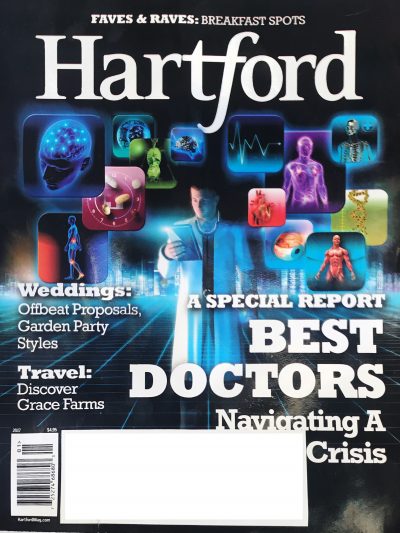
Jason Ryan, Cardiovascular Disease
Peter Schulman, Cardiovascular Disease
Aseem Vashist, Cardiovascular Disease
Jane Grant-Kels, Dermatology and Pathology
Hanspaul Makkar, Dermatology and Pediatric Dermatology
Marti Rothe, Dermatology
Bruce Strober, Dermatology
James Whalen, Dermatology
Jeffrey Spiro, Ear, Nose, and Throat
Andrew Arnold, Endocrinology
Carl Malchoff, Endocrinology
Pamela Taxel, Endocrinology
Robert Cushman, Family Medicine
Patrick Coll, Geriatrics
Anne Kenny, Geriatrics
Margaret Rathier, Geriatrics
Gail Sullivan, Geriatrics and Internal Medicine
Craig Rodner, Hand Surgery
Rebecca Andrews, Internal Medicine
Elizabeth Appel, Internal Medicine
Lynn Kosowicz, Internal Medicine
Thomas Manger, Internal Medicine
Jacqueline Nissen, Internal Medicine
Andre Kaplan, Nephrology
Claudio Adrian Benadiva, Obstetrics/Gynecology
Molly Brewer, Obstetrics/Gynecology
Winston Campbell, Obstetrics/Gynecology
Victor Fang, Obstetrics/Gynecology
Anthony Luciano, Obstetrics/Gynecology
John Nulsen, Obstetrics/Gynecology
Dave Park, Obstetrics/Gynecology
Garry Turner, Obstetrics/Gynecology
William Ehlers, Ophthalmology
Robert Arciero, Orthopaedic Surgery
Augustus Mazzocca, Orthopaedic Surgery
Kevin Shea, Orthopaedic Surgery
Seth Brown, Otolaryngology
Denis Lafreniere, Otolaryngology
Jeffrey Spiro, Otolaryngology
Naveed Hussain, Pediatric Specialist/Neonatal-Perinatal
David Steffens, Psychiatry
Andrew Winokur, Psychiatry
Nausherwan Burki, Pulmonology
Robert Dowsett, Radiation Oncology
David McFadden, Surgery and Surgical Oncology
Peter Albertsen, Urology
Carl Gjertson, Urology
James Menzoian, Vascular Surgery
Pediatrics Faculty at Connecticut Children’s Medical Center
Mary Wu Chang, Dermatology
Karen Rubin, Endocrinology
Henry Feder, Infectious Diseases
Juan Salazar, Infectious Diseases
Edwin Leonard Zalneraitis, Neurology, General
Lawrence Zemel, Rheumatology
Brendan Campbell, Surgery and Thoracic Surgery
Richard Weiss, Surgery
Update: UConn HealthONE
The road to our electronic medical record system, HealthONE, continues full speed ahead. Roberta Luby, assistant vice president for HealthONE, says they’re more than halfway through the “building” phase of the project. They’ve started holding adoption sessions in which managers and key users review the dashboards that will help them manage patient care, quality measures, and financial results. Watch the video to learn how your feedback has played a critical role in the project’s success so far.





